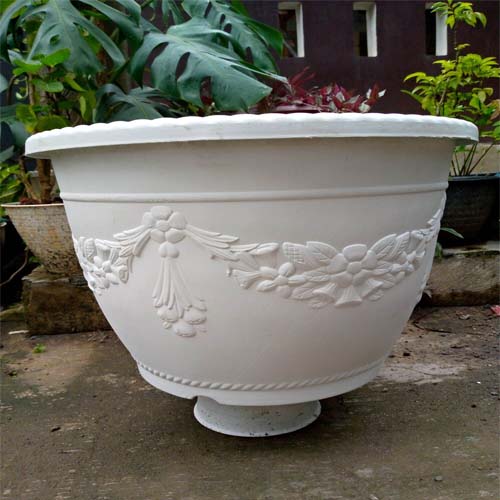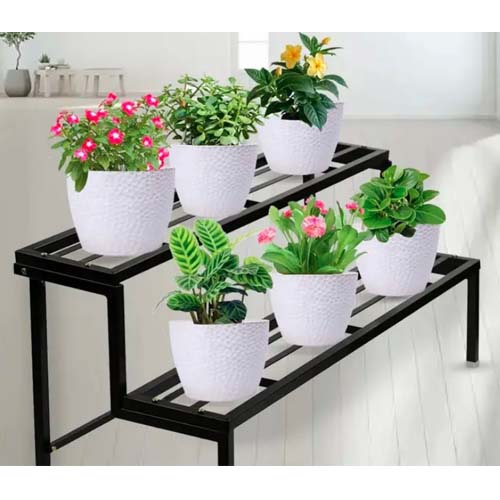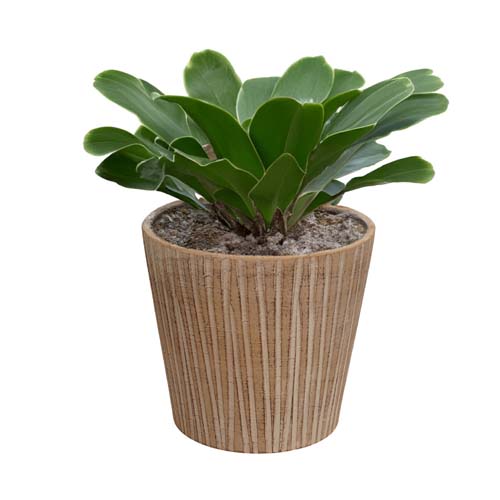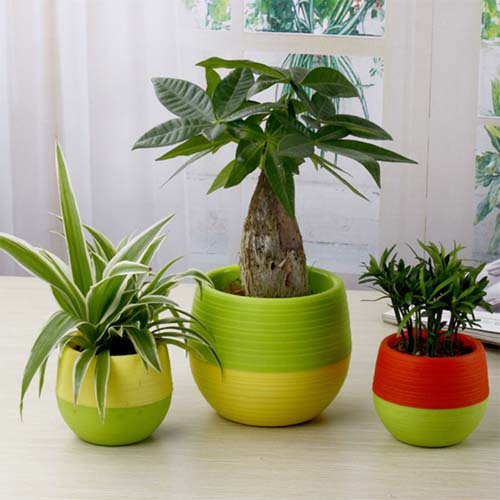When cultivating flowers, choosing the right pot for flower is just as important as selecting the perfect soil and ensuring adequate sunlight. The pot you use not only influences the health and growth of your flowers but also contributes to the aesthetics of your space. Whether you’re an experienced gardener or a novice, understanding how to choose the right pot can transform your gardening experience.
Material Matters: Types of Pots
Flower pots come in various materials, each with its own benefits and drawbacks. Let’s explore the most common types:
- Terracotta Pots:
- Advantages: Terracotta pots are porous, allowing air and moisture to move through the walls. This helps prevent root rot and overwatering.
- Drawbacks: They are prone to cracking in freezing temperatures and can dry out quickly in hot climates.
- Best For: Plants that prefer dry soil, such as succulents and cacti.
- Ceramic Pots:
- Advantages: These pots are often glazed, offering a variety of colors and designs. They retain moisture better than terracotta.
- Drawbacks: They can be heavy and lack the breathability of terracotta.
- Best For: Indoor plants or flowers needing consistent moisture levels.

- Plastic Pots:
- Advantages: Lightweight, affordable, and available in a wide range of sizes and styles. They retain water well.
- Drawbacks: They can look less appealing and may become brittle over time when exposed to sunlight.
- Best For: Beginners or gardeners who frequently move their plants.

- Metal Pots:
- Advantages: Durable and sleek, offering a modern aesthetic.
- Drawbacks: They can overheat in direct sunlight, damaging roots, and may rust if not treated properly.
- Best For: Decorative indoor plants or shaded outdoor areas.
- Wooden Pots:
- Advantages: Natural-looking and excellent for insulation, keeping roots cool.
- Drawbacks: Susceptible to rot and may require maintenance, such as sealing or lining.
- Best For: Outdoor plants and rustic-themed gardens.

Size Matters: Finding the Perfect Fit
The size of the pot you choose can significantly impact your plant’s health. Consider the following:
- Depth and Diameter:
Ensure the pot is large enough to accommodate your flower’s root system. A pot that is too small will restrict growth, while an excessively large pot can lead to overwatering. - Growth Potential:
If you’re planting young flowers, consider their growth trajectory. Choose a pot that provides ample room for expansion. - Drainage:
Always opt for pots with drainage holes to prevent waterlogging. If a pot lacks drainage, add a layer of gravel or consider drilling holes.
Matching Pot Style to Your Flowers
The pot you choose should complement the flowers it houses, both aesthetically and functionally. Here are some pairing tips:
- Bright, Bold Flowers:
Neutral pots, such as terracotta or plain ceramic, allow the vibrant colors of your flowers to stand out. - Delicate, Pastel Flowers:
Decorative pots with subtle patterns or soft hues can enhance the gentle beauty of these flowers. - Trailing Plants:
Use hanging pots or those with pedestal stands to showcase cascading foliage and blooms.
Special Considerations for Indoor and Outdoor Pots
- Indoor Pots:
Indoor pots should prioritize aesthetics, as they double as decor. Ensure they have a saucer or an inner lining to prevent water from damaging surfaces. - Outdoor Pots:
Outdoor pots must withstand weather fluctuations. Choose materials like terracotta or treated wood for durability, and consider adding mulch to the soil to retain moisture.

Maintenance Tips for Flower Pots
- Cleaning:
Regularly clean your pots to remove salt buildup and debris. Use a mild soap and water solution for thorough cleaning. - Winter Care:
For pots left outdoors, ensure they’re frost-resistant. Move delicate materials like ceramic or terracotta indoors during freezing conditions. - Re-potting:
Monitor your plants for signs of being root-bound, such as stunted growth or roots protruding from drainage holes. Re-pot annually or as needed.
Sustainable Choices: Eco-Friendly Pots
For environmentally-conscious gardeners, consider biodegradable pots made from materials like coconut coir, peat, or recycled paper. These pots decompose naturally, enriching the soil and reducing waste.
Final Thoughts
Choosing the right pot for flower can elevate your gardening game, ensuring healthy blooms and a beautiful display. By considering factors like material, size, and style, you’ll create an ideal environment for your flowers to thrive. Whether you’re decorating your home or cultivating a lush garden, the perfect pot makes all the difference.
Read https://cloudquadra.us/the-beauty-of-white-flowers-with-yellow-centers/
Leave a Reply